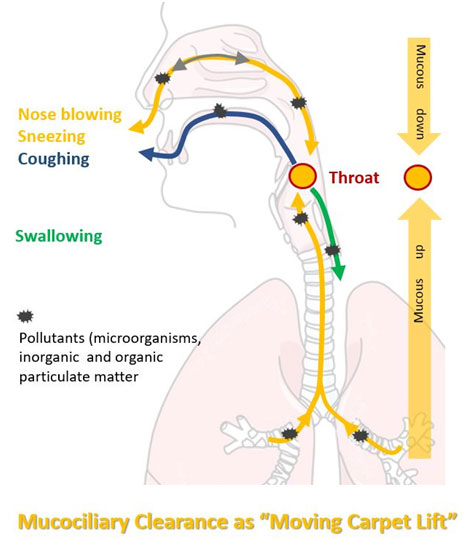
Low humidity and its affect on our airway defence system
The nose and throat is our body's first line of defence in the fight against pollutants and microbes contained in the air we breathe. Their job is to filter, humidify and heat the air before it enters more sensitive parts of our respiratory system and does us real damage.
A central part of this defence mechanism is a layer of tiny hair-shaped structures, called cilia, inside our respiratory tract and a thin membrane of mucous that covers them. Airborne pollutants, such as particles, allergens, viruses and bacteria, are captured by this sticky mucous membrane and removed from the air. The mucous layer traps and clears most potential intruders into our airways and serves as a defensive "moving carpet lift".
The tiny cilia whip back and forth many times per second to transport the mucous and its freight towards our throats. It is then swallowed or coughed out, and therefore destroyed or rendered harmless.
If the air we are breathing in is below 40%RH (relative humidity) over a prolonged period of time, this mucous membrane layer dries out. This can cause damage to the cilia, inhibits our ability to filter pollutants from the air we breathe and leave us susceptible to airborne infection.

Mucous membranes in our respiratory tract trap airborne pollutants and tiny cilia transport them to our pharynx, where they are swallowed or coughed out.

In low humidity environments below 40%RH our mucous membranes dry and this "mucociliary clearance" process is impaired. This leaves us more susceptible to airborne infections, like the flu or common cold.
Scientific studies showing how dry air affects our airway defence system

Iwasaki 2019

Ritzel G 1966

Green G 1975

Sale C 1972

Gelperin A 1973

Green G. 1981

Ewert G 1965

Taylor S, Hugentobler W. 2016

